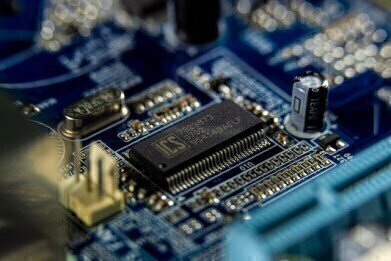Biofuel Industry News
How Do Smart Cell Batteries Work?
Oct 10 2022
At the University of Warwick in England, engineers are reimagining batteries as dynamic, “mechatronic devices” with the ability to communicate with users and external equipment. By integrating sensors and control hardware into the cells, the team is designing ‘smart’ batteries that outperform their passive counterparts. So, how do smart cell batteries work?
The anatomy of smart cell batteries
To understand how smart cell batteries work it’s important to break down the anatomy of the system. A complete battery system is called a pack. Packs are made up of modules, which are made up of individual components called cells.
Smart batteries feature built-in technology to actively monitor each cell. This is known as a battery management system (BMS) and collects data on important parameters like:
- Voltage
- Current density
- Charge level
- Temperature
- Mechanical stress
- Pressure
- Vibration
- State of Health (SoH) of each cell
Communication is key
Data is used to customise processes and make adjustments when abnormalities are detected. For example, if the BMS detects an abnormal temperature increase it can take action to prevent issues like short circuiting and thermal runaway.
Charge efficiency is maximised thanks to direct communication with smart chargers. Sensors in the cells request their own voltage and current, which helps boost charge times, improve power delivery efficiency extend the overall life of the battery pack. Data is also sent to the user for analysis. This offers detailed insight into battery performance and potential issues that need to be addressed.
The advent of self-sensing technology
In an article published in the Journal of Power Sources, the authors explore how self-sensing capabilities are used to improve lithium ion batteries. The team introduce a new Multi-Parameter FBG (MP-FBG) sensor with the ability to simultaneously monitor multiple electrical, mechanical and thermal parameters.
“In contrast to conventional battery management strategies that rely solely on voltage, current, and temperature at module level, we present a smart Li-ion cell with an integrated fibre Bragg grating (FBG) optical fibre sensor that enables simultaneous measurement of temperature, force, and displacement at the cell level with a simple beam structure,” reads the abstract.
Advances in lithium ion battery technology are already playing an important role in decarbonising the economy and addressing global issues like climate change and air pollution.
Want to know more about smart battery cells and how the technology is revolutionising the energy sector? We cover the mechanics of smart batteries, as well as applications in the automotive and aerospace industries, in ‘What Are Smart Battery Cells? Definition, Applications & Advantages’.
Digital Edition
PIN 25.3 June/July
June 2024
Analytical Instrumentation - Recent Advances In Various Bench Scale Accelerated Oxidative Testing Methods For Fuels - Petrochemical Industry: Anton Paar Solutions Streamline Processes, Reduce H...
View all digital editions
Events
Jul 30 2024 Jakarta, Indonesia
Jul 30 2024 Jakarta, Indonesia
China Energy Summit & Exhibition
Jul 31 2024 Beijing, China
Jul 31 2024 Chengdu, China
Aug 05 2024 Moon Township, PA, USA


















